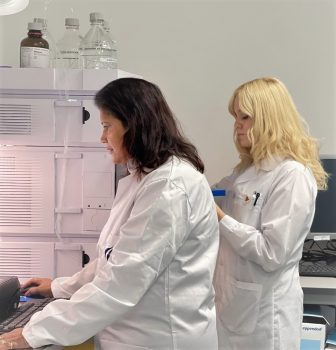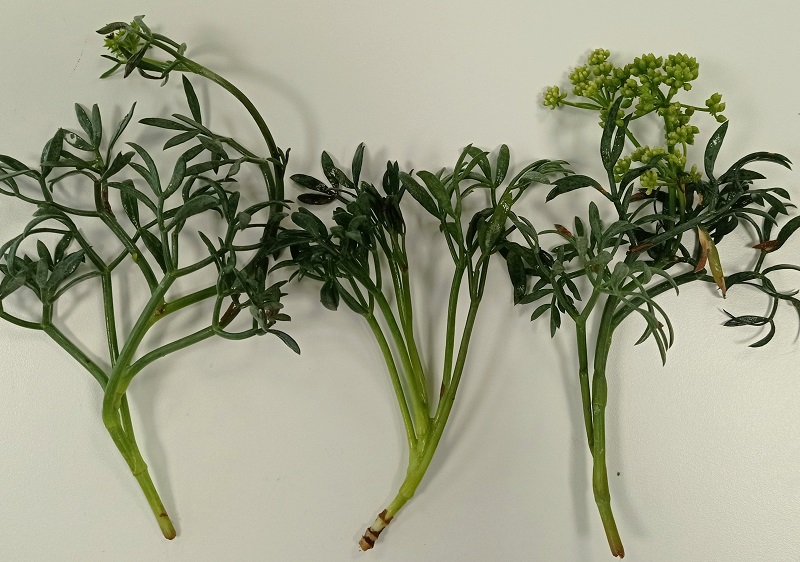Chemical variation in halophyte biomass cultivated at different salinities
Knowing the effects of salinity on biomass composition allows optimisation of cultivation to increase production of the desired compounds.
An increase in cultivation salinity causes oxidative stress in plants and can affect the chemical composition of biomass. Therefore, the effect of cultivation salinity on the yield and composition of Salicornia europaea, Tripolium pannonicum and Crithmum maritimum was analysed in a characterisation study. S. europaea and T. pannonicum were cultivated in a hydroponic system under 0, 10, 20, 30, and 40 g/l NaCl salinities. C. maritimum could not survive under the highest salinity conditions; therefore, it was cultivated under 0, 5, 10, 15 and 20 g/l salinities. Biomass was harvested green, but not-food grade, and fractionated to green juice and fibre residue using a single-auger screw press. The composition of these fractions were analysed separately for the contents of carbohydrates, Klason lignin, protein, lipids, organic acids and minerals. By knowing the effect of salinity on the biomass composition, the cultivation could be optimised to enhance the production of desired compounds. The highest S. europaea yield was obtained in 20 g/l NaCl salinity, and these plants also had the highest lignocellulose content, 26.1 wt%, and the lowest crude protein content, 14.4 wt%. C. maritimum yielded the highest amount of biomass in 0 g/l NaCl, and for T. pannonicum, no significant change was observed in yield from batches grown in 0 g/l NaCl and 10 g/l NaCl. Salinity affected mainly the biomass yield instead of the composition of facultative halophyte species, and only a few significant changes were observed. T. pannonicum was high in protein (29.9 wt%) and content is comparable to common legumes. Lipid content was low (< 4 wt%) in all species. C. maritimum exhibited the lowest salt accumulation. Halophyte species can be seen as a potential feedstock for green biorefinery.


Contact:

Laura Hulkko
Aalborg University, Denmark
Issh@et.aau.dk
This results were published in Sientific Reports. Please find the whole article here:
Hulkko, L.S.S., Turcios, A., Kohnen, S. et al. Cultivation and characterisation of Salicornia europaea, Tripolium pannonicum and Crithmum maritimum biomass for green biorefinery applications. Sci Rep 12, 20507 (2022). https://doi.org/10.1038/s41598-022-24865-4
Acknowledgement
This project has received funding from the European Union’s Horizon 2020 research and innovation programme under Grant Agreement No 862834. Any results of this project reflects only this consortium’s view and the European Commission is not responsible for any use that may be made of the information it contains.


















